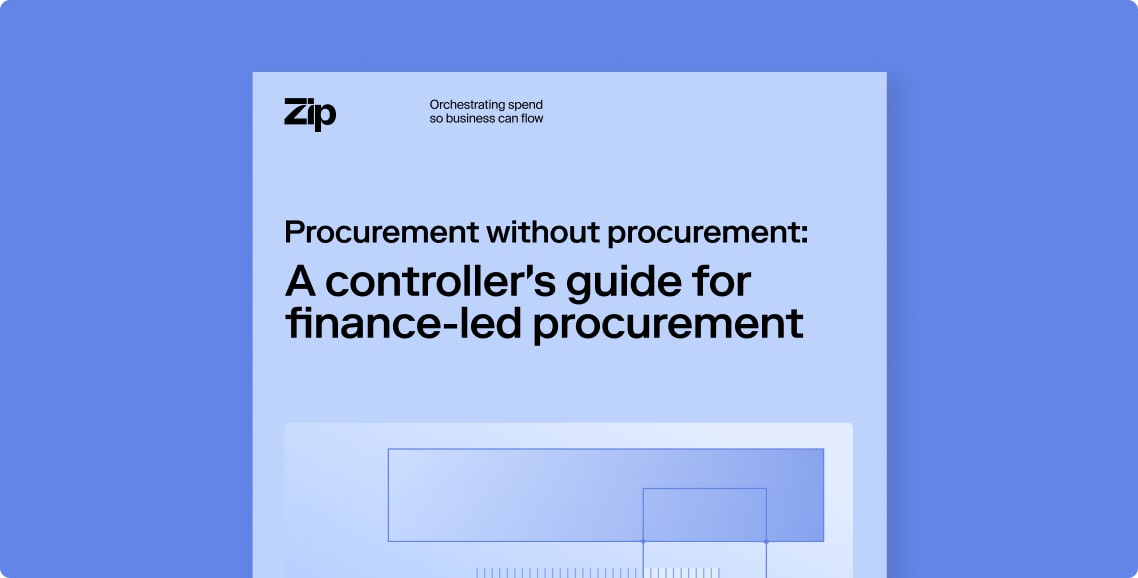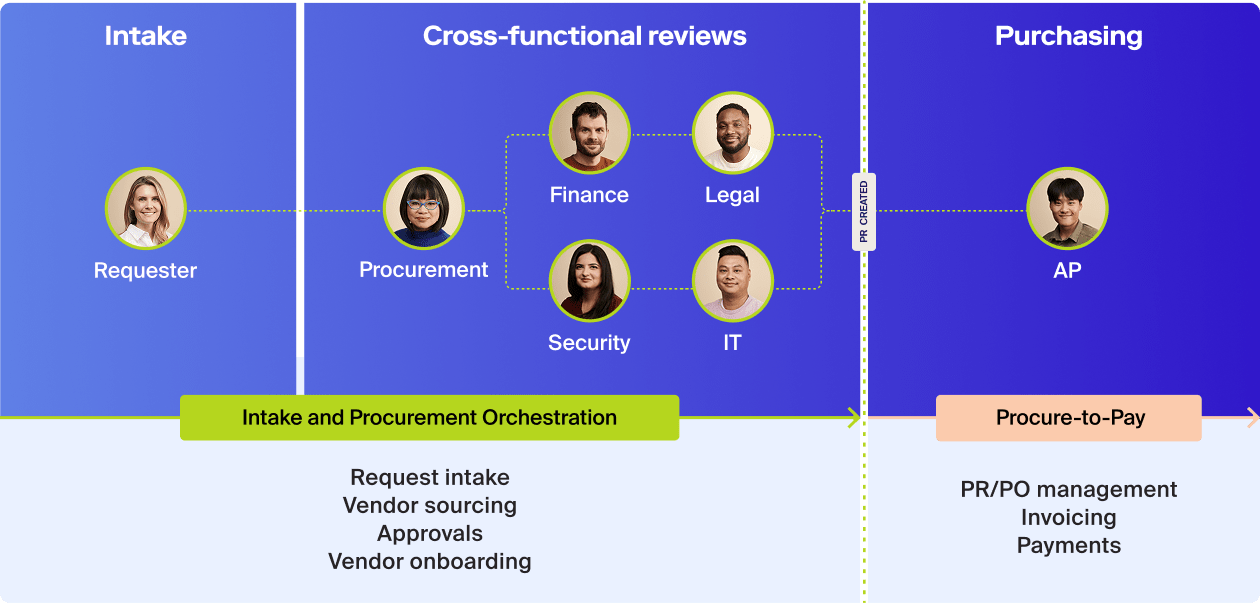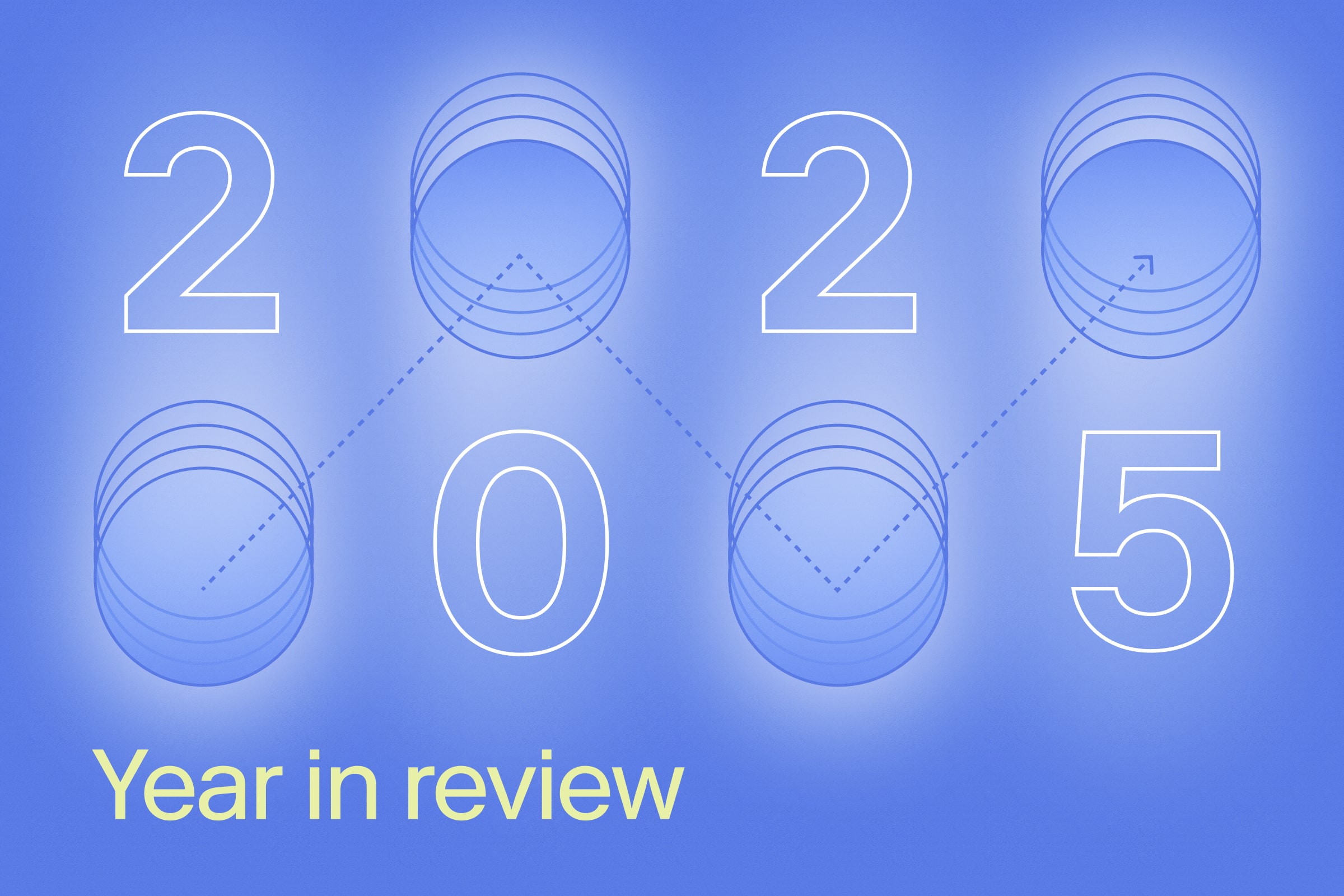
How to do procurement without a dedicated team
A guide for finance-led procurement that delivers results.

You may not have a dedicated procurement department, but procurement responsibilities are already on your plate.
From project management software subscriptions to routine, every-day office supplies, every purchase request inevitably must flow through your finance department. Without a structured approach, these requests can turn into a time-consuming, chaotic process that drags your resources and limits your visibility into spend.
The good news? You don’t need a formal procurement department to run procurement effectively. By leveraging scalable processes and tools, your finance team can take control of company spend without adding unnecessary overhead.
This guide will show you how.
Download this guide as an ebook

The case for early procurement
Why finance-led procurement works.
Finance teams are uniquely positioned to oversee procurement because they already own the budget. But informal or ad-hoc purchasing creates hidden costs: duplicate subscriptions, unmanaged vendor contracts, and time wasted chasing down details.
Procurement is simply defined as the act of buying goods or services from third parties to support business operations.
Any spend with suppliers falls under “addressable spend” that can be managed more effectively through formalized procurement activities. Traditionally, orchestrating procurement has not been an early focus for companies due to perceived complexity and competing priorities. However, this oversight can lead to several issues:

Employees might end up signing high-risk, long-term contracts with vendors without proper oversight.

Budgets are wasted or committed without the necessary approvals.

New vendors are onboarded without due diligence or risk reviews, exposing the company to potential vulnerabilities.

Employees spend more time navigating procurement chaos than focusing on their actual jobs.
An early focus on procurement can avoid pitfalls, while driving value across your entire business.
Here’s how early procurement can unlock value:

Optimized spend: Ensure every dollar spent is tied to growth and fully auditable.

Reduced risk: Get ahead of vendor contracts, ensuring legal and compliance checks are done without delays.

Improved efficiency: Eliminate approval bottlenecks with clear, easy-to-follow workflows for everyone involved.
Acting early to formalize procurement processes can transform procurement from a headache into a strategy that scales. It's fundamentally about moving from ad-hoc requests and chaotic messaging chains to a structured, intuitive system that everyone at the company is familiar with, understands, and can navigate through with ease.
Building a cross-functional procurement process that works

Finance-led procurement doesn’t have to be complex.
Here’s how to involve key stakeholders with minimal effort.
Set lightweight approval processes: Keep approvals lean. For low-risk purchases, allow department heads to sign off directly while routing higher-value or high-risk purchases to legal and finance.
Automate vendor onboarding: Use procurement platforms like Zip to streamline vendor reviews and compliance checks without manual back-and-forth.
Leverage cross-functional support only when necessary: Define which requests require cross-department collaboration, such as IT or legal reviews, and automate notifications to avoid bottlenecks.
It's time to change the narrative around finance teams and the processes they champion.
Finance is often viewed as the department of 'no', but with procurement, we have the opportunity to shift to a culture of 'know'—knowing how to spend smarter, knowing how to evaluate and plan around risk, and knowing how every purchase contributes to business growth.
Overcoming adoption barriers
Adoption stands as the most important metric of value when establishing a procurement program. Employee-use is the litmus test for the system’s effectiveness.
If no one is using the system, there’s no point to having a system. Procurement must feel natural, tailored to each user’s needs to ensure widespread adoption and, by extension, unlock maximal value for the business as a whole.
Here’s how to ensure your team embraces the new process:
Keep it simple: Use intuitive interfaces and clear workflows to guide employees through the process without creating friction.
Communicate the value: Emphasize how streamlined procurement reduces delays and simplifies everyone’s job.
Reward compliance: Recognize teams that follow the process, highlighting their role in reducing costs and improving efficiency.
Leveraging technology for seamless procurement
Modern procurement doesn’t require complex systems, but it does require a platform that guides the right workflows, to the right people, at the right time. Procurement orchestration platforms like Zip offer:
Employees can easily submit requests along a guided process that checks for errors, suggests alternative options when available, and captures all necessary information to reduce the need for manual intervention.
Dynamic approvals route requests to the appropriate stakeholders, ensuring smooth process workflows without requiring constant oversight from finance.
Real-time dashboard and analytics lets finance track spending across departments, making audits and reporting easier at month end.
The goal is to make procurement feel as natural and straightforward as any other tech-enabled task your employees perform. By adopting technology designed for finance-led procurement, you can save time, reduce costs, and gain control without additional headcount.
Use Zip for finance-led procurement
You don’t need a dedicated procurement team to run procurement like a pro.
With the right processes and tools, your finance org can manage company spending efficiently, minimizing risk and maximizing value.
By formalizing procurement workflows, automating routine tasks, and involving stakeholders only when necessary, you’ll free up time to focus on strategic initiatives while maintaining full control over spend. Zip makes procurement transformation seamless.







.jpg)



.png)



